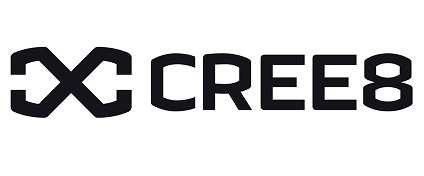How TV Show Financing Works: A Guide to Funding Your Series in 2025

Introduction
In the high-stakes world of premium television, a compelling script and A-list talent are only half the battle. The most significant hurdle in the entire production process is often the intricate and multifaceted challenge of TV show financing.
With budgets for high-end series regularly soaring into the tens or even hundreds of millions of dollars, securing the necessary capital is a complex art of financial engineering, strategic partnerships, and global deal-making. Gone are the days of a single network simply writing a check.
Today’s funding landscape is a sophisticated mosaic of international co-productions, government incentives, private equity, and pre-sale agreements. For producers and executives, understanding how to navigate this landscape is the most critical skill required to bring a vision to the screen.
This guide provides an executive-level overview of the primary funding models that power the modern television industry.
Table of content
- The New Era of TV Show Financing
- Funding Model 1: Studio and Network Financing
- Funding Model 2: International Co-Productions
- Funding Model 3: Pre-Sales and Distribution Guarantees
- Funding Model 4: Tax Incentives and Production Rebates
- Funding Model 5: Equity and Gap Financing
- Building a Financial Strategy for Your TV Show
- Conclusion: Financing as a Strategic Advantage
- Frequently Asked Questions
Key Takeaways
| Core Challenge | The fragmented and global nature of TV show financing makes it difficult to identify, vet, and connect with suitable funding and co-production partners. |
| Strategic Solution | Employ a centralized data platform to map the global financing landscape, qualify partners based on their deal history, and streamline outreach. |
| Vitrina’s Role | Vitrina provides a comprehensive, searchable database of over 2,200 financing and co-production companies, enabling producers to find and qualify partners efficiently. |
The New Era of TV Show Financing
The explosion of global streaming platforms has fundamentally altered the economics of television production. While demand for content is at an all-time high, the sheer cost of producing premium, cinematic-quality series has forced a shift away from singular funding sources.
A high-end drama can cost anywhere from $5 million to over $25 million per episode. According to a report from Forbes, the independent film and television financing market is experiencing a resurgence, driven by a diverse array of investors looking to capitalize on the content boom.
This new environment requires producers to act as sophisticated financial strategists, piecing together funding from multiple sources across different territories.
A single project might involve a US studio, a German broadcaster, a Canadian production partner to access tax credits, and a UK-based distributor providing a minimum guarantee.
Each partner brings not only capital but also specific requirements, rights, and territories. Successfully managing this complex web of relationships is a critical component of the overall TV series lifecycle and is essential for getting a project off the ground.
Funding Model 1: Studio and Network Financing
The most traditional model of TV show financing involves a major studio (like Disney or Warner Bros. Discovery) or a network/streamer (like HBO or Netflix) funding a project in its entirety.
In this scenario, the studio or network bears 100% of the production cost in exchange for owning the majority—if not all—of the intellectual property (IP) and global distribution rights.
This model offers the significant advantage of simplicity and stability. Producers can focus on the creative aspects of the show without the distraction of constantly raising capital. However, it is also the most competitive route.
Studios and streamers greenlight a very small percentage of the projects pitched to them, and they typically favor established creators with proven track records or projects based on highly valuable, pre-existing IP. For independent producers, securing a full-funding deal from a major player is increasingly rare.
Funding Model 2: International Co-Productions in TV Show Financing
International co-productions have become one of the most dominant models for financing independent television. This strategy involves partnering with production companies in two or more different countries to pool financial resources.
The benefits of this model are substantial. Firstly, it allows producers to access multiple pools of capital simultaneously. A UK producer, for example, could partner with a French company to access both UK tax credits and French broadcast funding. Secondly, it guarantees distribution in the partner countries, securing an audience from the outset.
According to a report from the British Film Institute, co-productions are a key driver of production spend, demonstrating their economic importance.
However, co-productions introduce significant complexity. They require navigating different legal frameworks, production cultures, and financing treaties between nations.
Finding the right partner—one who shares the creative vision and has a solid financial reputation—is paramount. This is where a global database of production and financing companies becomes an indispensable tool for discovery and due diligence.
Funding Model 3: Pre-Sales and Distribution Guarantees
Pre-sales are a cornerstone of independent TV show financing. This model involves licensing the distribution rights for a series to broadcasters or distributors in various territories before production has even begun. In exchange for an upfront fee, the distributor receives the exclusive right to sell the show in their specific region.
These fees, known as minimum guarantees (MGs), are paid to the producer and can be used to cash-flow the production budget. By securing pre-sales in several key territories, a producer can cover a significant portion of their costs before filming starts. This model heavily de-risks the project for other investors and lenders.
The key challenge is accurately estimating the value of a show in different markets and having strong relationships with international buyers. For more information on this process, see our deep-dive on distribution and licensing.
Funding Model 4: Tax Incentives and Production Rebates
Governments around the world offer lucrative tax incentives to attract film and television productions to their jurisdictions. These incentives can take the form of a tax credit, rebate, or grant, and can often cover 20-40% of a project’s qualifying local expenditures.
For producers, these incentives represent “soft money” that can significantly reduce the amount of private capital they need to raise. Locations like Canada, the UK, Australia, and many US states (like Georgia and New York) have become major production hubs largely because of their generous and reliable tax credit programs.
Structuring a production to maximize these benefits is now a standard part of the TV show financing process. It often involves setting up a local production entity and ensuring a certain percentage of the budget is spent on local cast, crew, and services.
Funding Model 5: Equity and Gap Financing
After maximizing funds from co-producers, pre-sales, and tax credits, there is often still a budget shortfall. This remaining amount is typically covered by private equity.
Equity investors provide direct cash in exchange for an ownership stake in the project and a share of the profits. These investors can range from high-net-worth individuals to specialized media investment funds.
Gap financing is a specific type of loan taken out against a project’s unsold distribution rights. A lender will provide a loan based on the estimated value of these rights, taking a senior position in the recoupment waterfall.
Both equity and gap financing are considered “hard money” and are among the most expensive forms of capital, as these investors take on the highest level of risk.
Building a Financial Strategy for Your TV Show
There is no one-size-fits-all solution for TV show financing. The optimal strategy depends on the project’s genre, budget, and international appeal. For most independent productions, the final financing plan is a carefully constructed combination of all the models described above.
The process is a strategic puzzle: securing a pre-sale in one territory might unlock a co-production deal in another, which in turn makes the project attractive to equity investors.
Successfully assembling this puzzle requires deep market knowledge, an extensive network of contacts, and the ability to vet partners effectively. Without a centralized way to track who is financing what and to identify potential partners based on their history of deals, producers are at a significant disadvantage.
This is the core problem Vitrina solves: providing a transparent, data-driven view of the global financing landscape. By leveraging our platform, producers can map out potential partners, from projects currently in development to active financing companies, streamlining the most challenging phase of bringing a series to life.
Conclusion: Financing as a Strategic Advantage
TV show financing has evolved from a straightforward transaction into a complex, global strategy.
Mastering the interplay between international co-productions, government incentives, pre-sales, and private equity is no longer optional—it is the defining characteristic of a successful modern producer.
In an industry where capital is the ultimate greenlight, the ability to efficiently identify, vet, and secure the right financial partners provides a decisive competitive advantage, turning a great idea into a tangible, and profitable, global series.
Frequently Asked Questions
Most independently produced TV shows today are funded through a hybrid model. This typically involves a combination of international co-production partners, pre-sales to distributors in key territories, government tax incentives or rebates, and private equity investment to cover any remaining budget gaps.
A co-production is a partnership between two or more production companies from different countries who collaborate to fund, produce, and distribute a TV show. This model allows producers to pool financial resources, share risks, and access tax credits and broadcast deals in each partner’s home territory.
“Soft money” refers to funds that do not have to be repaid from a project’s profits. This primarily includes government-backed incentives like tax credits, rebates, and grants, which are designed to attract productions to a specific state or country.
Producers find investors through a variety of channels. This includes leveraging industry relationships, attending film and TV markets (like Cannes or AFM) to meet with sales agents and financiers, and using professional networking and data platforms to identify and connect with specialized media investment funds and private equity groups.

























